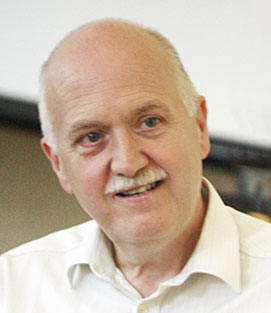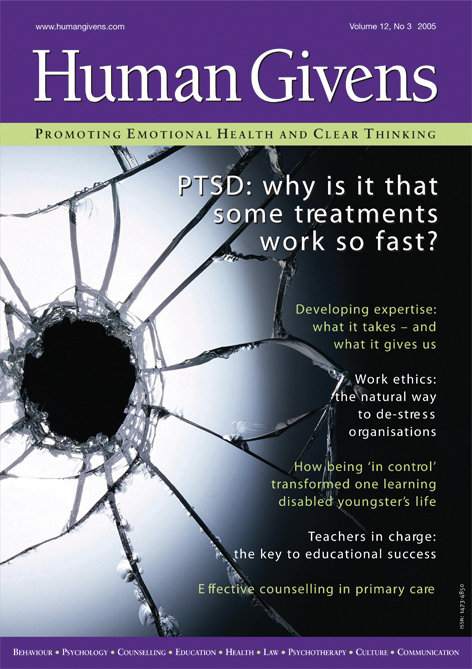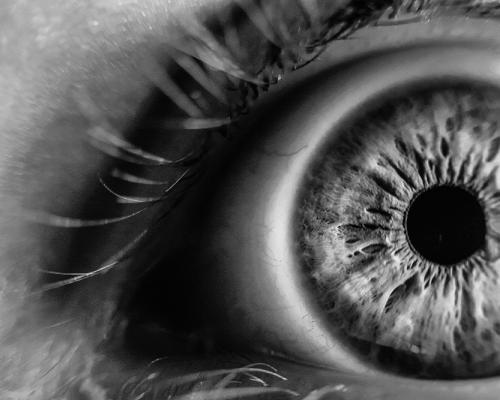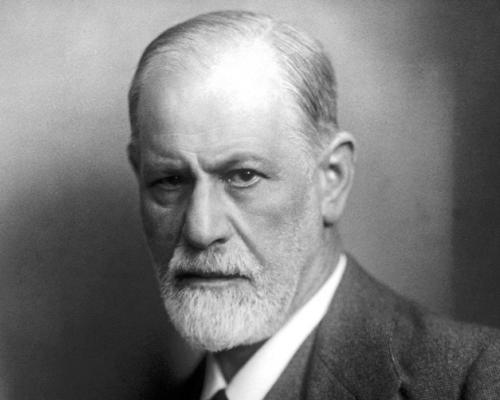PTSD: why some techniques for treating it work so fast
Joe Griffin suggests that post-traumatic stress disorder treatments that can yield immediate success share an underlying mechanism, which explains their effect.
A MAN recalls the terrifying moment when the bomb went off that blew away the lower part of his leg. He shakes as, yet again, the images crowd in upon him, the screaming, the smell of burning, the sudden blackness, the splintering glass. He has come to see a therapist because these images and fears, from eight years ago, still continually invade his life.
Quickly, the therapist works to calm him down, relaxing him deeply, and then gradually guides him to experience himself going swiftly backwards through the trauma, as if he were a character in a film, which is being rewound. The therapist then asks him to view the trauma as if in fast forward on a TV screen. Just ten minutes later, after having done this a number of times, the man can think and talk about his ordeal without horror and panic for the first time since the incident. The intrusive thoughts and nightmares he had been suffering do not return.
Another therapist in another therapy room requests a man to focus on a traumatic memory from the day that he nearly lost his life in an industrial accident. Simultaneously, the therapist moves her fingers to and fro in front of her client, asking him to track them with his eyes. Suddenly the man is sweating and shaking and, as different images of the events surface, one after the other, rates his degree of discomfort and the believability to him of certain statements about self-confidence and hope that the therapist presents to him. By the end of the hour's session, the devastating power of the memories has subsided and the man is much more hopeful about going on positively with his life.
In another therapy session in another therapist's office, a woman who suffered a vicious rape is being asked to bring the occasion to mind, focus on one incident, and allow the terror she experienced to resurface and intensify. Then she is asked to tap parts of her face and upper body a number of times in a particular order, and scale her degree of discomfort.
To keep up her emotional arousal, the therapist asks her to repeat emotive words connected to the incident (such as "the shirt is tearing") and then to say something like, "Although I feel fearful, I deeply and completely accept myself". All this time, she is tapping, as instructed. Quite quickly the intolerable feelings abate, but then more related images come into mind, causing her arousal to rise, and she is guided to tap and scale again and again. Soon she no longer feels traumatised by memories of the rape.
These are brief snapshots of three therapeutic methods — the rewind technique, eye movement desensitisation reprocessing (EMDR) [1] and emotional freedom therapy (EFT, colloquially known as 'tapping') [2] — for which claims of success bordering on the miraculous have been made, in the treatment of post-traumatic stress disorder (PTSD). For all have demonstrated numerous genuine successes.
As in the examples described above, people who for years have suffered over-whelming, intrusive memories and panics (because innocent sights, sounds or smells trigger the memory and the fear) are free of their burden after a single session. It is, indeed, a startling thing that someone can be in the grip of, or almost consumed by, an extreme reaction to trauma at one minute and yet be manifestly unaffected a short while later.
Each of these methods has its firm adherents who proclaim it 'the best' for treating PTSD. Most interesting to me, however, is to find out what it is that, at a very deep level, these three techniques may have in common. All seem capable of achieving profound physiological change at least some of the time, and I would like to explore more closely the powerful mechanism I think might underlie the effects.
The three techniques
At the human givens diploma course and at HG College workshops, we teach a refinded version of the rewind technique, with which we have had a great deal of success. It has been tested out over lengthy periods in various settings, including in Northern Ireland where, for over a period of five years, practitioners reported a very high success rate when working with people traumatised by the violence there during 'the Troubles'.
We now have literally hundreds of practitioners delivering this technique and, down the years, we have continually improved on it, so that most practitioners are achieving a consistently high success rate with it. But, as with any technique, it doesn't work 100 per cent of the time.
The EMDR technique was 'discovered' in 1987 by Francine Shapiro, then a mature clinical psychology student in California, who refined it into a highly specific treatment for which, originally, there were numerous supporters, eminent professors of psychology among them. It is recommended as a treatment for PTSD by the National Institute for Care and Health Excellence (NICE). However, over time, it has become clear that results are mixed and some researchers claim its effectiveness is no higher than with placebo. Others have found that the eye movements do not inhibit negative emotions and that the reprocessing element doesn't play a significant role in any positive outcome. This leaves desensitisation, which is a long-known therapeutic technique, and non-specific effects, such as therapist-client rapport.[3] (This was even acknowledged in the NICE guidelines.)
Clearly, claims are controversial for this technique but nonetheless a disinterested reviewer would need to be open to the fact that it does work in certain circumstances, in order to identify the underlying mechanism.
The tapping technique springs initially from the work of a clinical psychologist, Roger J Callahan, in the United States, who developed what he called "thought field therapy".[4] This technique involved tapping meridian points on the body whilst recalling a traumatic event and experiencing the extreme discomfort associated with it. According to Callahan's version, particular meridian points release and rebalance energies preferentially for different types of trauma.
The emotional freedom technique is a simplified version of thought field therapy developed by engineer Gary Craig, who trained with Callahan. It involves tapping the meridian points in turn whilst recalling a stressful event, experiencing and identifying the nature of the feelings that come up, verbalising them and accepting or reframing them.
For instance, "Even though I am feeling a tightness in my chest because I am angry at my wife, I still respect and love her deeply". Craig claims that stressful memories, phobias, PTSD and even addictive behaviours can be significantly abated by this means, thus making it the proverbial cure-all. But we are concerned here only with the claims that concern trauma and phobias.
As with the rewind technique, there is no published clinical controlled trial showing that tapping works (there are some trials that show an effect for EMDR, which is why NICE recommended it) but there are videos that demonstrate its application to patients and cures apparently being achieved. Having seen some of these videos, I have to say that they appear very convincing, although we can't know whether we are watching a subgroup of patients for whom the technique has worked or a random selection of patients.
Having experimented with the technique myself, I have had some success, and know of others who have, too. So, is there a common mechanism underlying these three techniques, and any other variations that may be developed?
The Rewind Technique
The rewind technique should be carried out by an experienced practitioner and should only be performed once a person is in a state of deep relaxation.
Once fully relaxed, they are encouraged to bring their anxiety to the surface and then are calmed down again by being guided to recall or imagine a place where they feel totally safe and at ease. Their relaxed state is then deepened and they are asked to imagine that, in their special safe place, they have a TV set or other device with a screen, and a remote control.
They are asked to imagine floating, out of body, up behind the screen and to watch themselves watching the screen, without actually seeing the picture (something called double disassociation, a means of distancing them even further from the traumatic memory). They watch themselves watching a 'film' of the traumatic event that is still effecting them. The film begins at a point before the trauma occurred and ends at a point at which the trauma is over.
They are then asked, in their imagination, to float back into their body and experience themselves going swiftly backwards through the trauma, from end point to start point, as if they were a character in a film that is being rewound. They then watch the same images but as if on a TV screen while pressing the fast-forward button (disassociation). All this is repeated back and forth, at whatever speed feels comfortable, and as many times as needed, till the scenes evoke no emotion from the client.
If the feared circumstance is one that will be confronted again in the future - for instance, driving a car or using a lift - the person is asked, while still relaxed, to see themselves doing so confidently.
Besides being safe, quick, and painless, the technique has the advantage of being non-voyeuristic. Intimate details do not have to be made public.
The role of dissociation
Dr Farouk Okhai, formerly a consultant psychiatrist in Milton Keynes and now retired, has offered some hypotheses as to why the tapping technique might work.[5] He suggests it might work, primarily, because it creates a dissociation between the intensity of the original experience and current emotional experience. Focusing part of the attention mechanism on the tapping disengages attention sufficiently to allow a reframe, a different perspective, to be taken concerning the trauma.
The same thing happens in the rewind technique, when people view their trauma at a distance on a screen or imagine running backwards through it as if in a video rewind: a dissociation between the past traumatic events and the feelings they usually arouse is achieved.
But the next question, then, is why would dissociation help cure trauma? Can we go beyond just the label? What is happening in dissociation? On one level, in creating dissociation, we are changing the meaning of the trauma. This is achieved by manipulating the interplay between the amygdala, the hippocampus and the cerebral cortex. The amygdala is the organ in the brain that alerts us to possible danger and triggers the fear response; the hippocampus gives an event context and codes it in a form that can be stored as a memory in the cerebral cortex.
However, when an event occurs that is experienced as traumatic, the high emotional arousal inhibits the hippocampus from functioning properly — the release of the stress hormone cortisol prevents the hippocampus from communicating effectively with the amygdala, which is processing the emotional feelings. The result is inappropriate fear that is generated even after the traumatic event is over.
In most cases, this is a temporary state of affairs and, over the next short while, the event is put into proper context. "My car was hit by a van that went through a red light. Not every van goes through a red light. It is safe to drive again." In sufferers from PTSD, however, this corrective phase doesn't occur. Thus no context can be created for the traumatic memory. It is an event that is ever in the present, all pervasive, triggered by any number of stimuli only peripherally connected.
A car pulling up at the traffic lights with squeaking brakes may be pattern matched to a similar sound heard just before a car crashed, turned over and caught fire, and the accompanying terror. Or the flapping of a window blind brings back the sound of a wall calendar flapping in the summer breeze, as the man held a knife to the cashier's throat.
However, when re-experiencing the trauma in a dissociated way, by means of one of the methods described earlier, an individual is in a state of low arousal. In this state, the hippocampus is not inhibited and can record the context as a safe one — the person is aware of sitting in the therapist's room, dealing with a memory.
In other words, the brain is processing the trauma at the same time as it is processing current reality, so the experience will be coded by the hippocampus as having a context that is non-threatening, even though threatening in the past. (This is rather like what happens when we wake in panic from a nightmare and realise that we are safe in bed. We immediately stop being fearful because context has been created. That was a dream. This is now.)
So a new message is put into memory and, while still in this state of low arousal, the cerebral cortex can be engaged in reinforcing the new learning, by drawing further distinctions between the traumatic (but now non-emotionally arousing) event and present-day life.
For instance, the individual might be guided by the therapist to focus on how, although the event was life threatening at the time, it does not affect the present or the future. Thus a feedback loop is set in place that can allow the template in the amygdala to be reprogrammed. So, when we use a word like dissociation, it is just a term that encompasses a number of processes.
Arousing curiosity
Now, I'd like to try to take this a stage further, to try to identify what it is at a deeper level still that the rewind technique, the EMDR and the emotional freedom technique/thought field therapy have in common.
When someone engages in tapping — whether it is the client or the therapist tapping these so-called meridian points — it has the effect of firing off a succession of orientation responses. The orientation response is the name given to the electrical signal in the brain that alerts us to any surprising or unexpected stimulus that interrupts normal routine. (I rather prefer the name Pavlov gave it — the curiosity reflex.)
Research with animals as well as humans shows that the stimulus par excellence for firing the orientation response is movement. It grabs our attention at once. That is why commercials, for example, rely on so much sudden movement, because the eyes keep tracking it and thus we keep paying attention.
So, when movement is created by tapping the various meridian points — and when the expectation is set up that these meridian points are going to move energy in a positive way — the therapist is creating a powerful curiosity and expectation in the client, and a whole series of orientation responses will be fired off.
I suggest that we might be able to extrapolate the significance of that from what happens at night in the REM state when we dream. We now know that, before and during dreaming, orientation responses are firing intensively, which facilitate the processing of the day’s unexpressed emotional arousals metaphorically in dreams — the expectations that didn't pan out or that we didn't act on.[6] Dreaming clears them out, and we actually forget them. Thus the orientation response triggers us to forget intense emotional memory.
Even in waking life, we often have the experience of the orientation response causing forgetting. Say, for example, you are giving a lecture or giving a speech or you're making a point in conversation and you are focused on it, and somebody distracts you. They ask you a question about something completely different, and you refocus your attention on that momentarily. Then, when you go to pick up where you had left off, you can't remember what you were talking about!
If this happens when I am giving a seminar, I say I am having a senior moment. But actually it has nothing to do with age at all. It is simply that the orientation response has been fired, and it causes forgetting; it clears out whatever is in the working memory, the conscious mind.
There is a good reason for this. The orientation response enables us to suspend processing whatever we are currently attending to so that we can determine whether a sudden, unexpected stimulus threatens our safety or not. We have to have the mechanism to disengage attention, and this originally was crucial to our survival. So, when we talk about disassociation, what we're actually doing is disengaging attention; we're clearing out the working memory and creating temporary amnesia. And sudden or unfamiliar movement, above all, is a strong means of triggering that.
Of course, if we were to lose track of what we were doing every time the orientation response is fired, that would clearly be counterproductive and a risk, not an aid, to survival. If we are reading or baking a cake or mending a bike, we have associative links — the book, the cake mix, the tools — to draw us back to where we were.
But when we are talking or thinking, there is nothing to orient ourselves by. This is why so often we may decide on an action, such as collecting an item from upstairs, become engrossed in another thought en route and find ourselves unable to remember what we had set off to get. Similarly, if we do remember dreams, it is usually when something happens that brings dream content to mind — in effect, a context is created for remembering.
Unfamiliar movement that fires the orientation response also occurs, I suggest, during the rewind technique. In our mind's eye, we are seeing images going by very fast on a screen and, especially curious, going backwards as well as forwards. In effect, individuals are imagining themselves doing a series of physical movements that they have never done before.
This is surely going to fire off a massive number of orientation response signals, which will provide temporary amnesia or clear out the attic, so to speak. The therapist has aroused the pattern (the fear), dealt with it through dissociation and now it is cleared out of consciousness. But the therapist has also established an expectation — that the trauma will be resolved by this imagination exercise — and the cerebral cortex is curious as to how. In the temporary amnesia created, the brain is open to alternative meaning.
A good therapist will start to add in reframes at this point — for instance “You are physically a different person from the one whom that man raped 10 years ago. Cells in your body have been renewed a number of times since then. There is not one part of your skin today that that man touched.”

A straightforward explanation
So, I suggest, at the heart of curing PTSD is the mechanism of the dream state known as the orientation response, which fires while we are dreaming to help facilitate the forgetting of emotionally arousing expectations from the previous day, and also in waking life enables us temporarily to forget whatever we are focused on, so that we can attend to a new stimulus.
In PTSD, the orientation response temporarily withdraws attention from the high levels of emotional arousal and thus frees up blocked communication between the hippocampus, the amygdala and the cerebral cortex. This allows the cortex and the hippocampus, in a state of low arousal, to work with the amygdala to provide a new context for understanding the trauma, which then changes its meaning, and to recode the memory accordingly. (This would occur only if the traumatic experience were genuinely in the past and not an ongoing one, such as living with an abusive partner.) If this is the correct understanding of what lies at the heart of curing trauma, we have a straightforward scientific explanation of what is going on.
This, I believe, will be highly reassuring to people, particularly those used to a commonsense, scientific, logical way of understanding the world, such as people are in the West. We don't have to import ideas about moving energy sources, which belong to ancient metaphysical systems that have little relevance to today. It also enables us to look dispassionately at the different techniques for treating trauma and see that they are using a common set of mechanisms.
Which technique is best?
If, then, there is a common set of mechanisms, does it matter which technique practitioners use? Is one more appropriate than another, or in certain contexts? I would say yes.
For instance, we have had reports from therapists that patients with symptoms of psychosis found the experience of tapping or being tapped highly threatening. Also, when the therapist does the tapping, some people find the experience unpleasantly invasive. Others are reluctant to be touched, if they have in the past experienced sexual abuse or if it goes against their culture. (However, when the therapist guides them to do the tapping for themselves, this problem is easily circumvented.)
Yet others find tapping uncomfortable because it seems 'weird'. However, if it is explained to them that the tapping action is firing off the brain's curiosity reflex, which distracts attention and causes brief amnesia for the trauma, so that they can put it into perspective as an event in their past, they may find it less threatening.
Another important caveat, however, is the piecemeal way that traumatic memories appear to come to light when using both tapping and EMDR. (Indeed, Shapiro has in the past urged against using the method with multiple traumas because of the amount of emotionally disturbing material that can surface during its use.)
On one of the videos I have viewed, in which Craig demonstrates the tapping technique with a male client, the man accessed the pain and anger aroused by the fact that his ex-wife had stopped him from seeing his daughter and, on a scale of 1 (low) to 10 (very high), managed to get his arousal down to the level of 2. However, almost immediately, another painful memory surfaced of the affair his ex-wife had had while they were still married.
Craig makes a comment to the effect that “This always happens. As soon as you cut down one tree, another one pops up ... As soon as you cure a headache, the patient becomes conscious of a toothache, then a stomach ache.” He then proceeds to deal effectively with each 'tree' with apparently good results and client satisfaction. However, the phenomenon does raise the possibility that a client could leave a therapist's office hyper-aware of new concerns or, having dealt with smaller concerns, vulnerable to other larger ones rushing into consciousness later, when immediate help is no longer available.
With our lengthy experience of the rewind technique, however, we know that a skilled therapist can use the technique to detraumatise a whole range of traumas in just one rewind, without these needing to be verbalised in turn or even necessarily brought to consciousness.
Another advantage of the rewind technique is that practitioners produce a profound level of calmness in the patient beforehand, so that they have much more control over keeping emotional arousal down once the patient gets in touch with the traumatic template. By monitoring their emotional state closely and, if arousal increases, guiding them to take a break from 'viewing' the trauma and to return in their imagination to the relaxing place identified prior to starting the procedure, we have a means to stop the patient getting too fearful and emotional.
Furthermore, it is easy to integrate and activate other ancillary therapeutic procedures alongside the rewind technique, such as the use of metaphors and storytelling while the person is still in a deeply relaxed state and the 'trying out' of new learning. However, the rewind doesn't work for everyone, particularly those who have difficulty relaxing or with visual imagery or who have difficulty getting in touch with feelings associated with the original trauma. This might especially apply to people on the Asperger continuum, whose brains may not store and have access to specific emotional memories in the way that the average person's brain does.
If the rewind technique doesn't work, it would certainly not be unreasonable to try the tapping technique, if the client agreed and felt comfortable with it (although, for the reasons described above, it may not be helpful for people on the Asperger continuum). In the light of the explanation I have offered in this article, it is unlikely that any particular order is required for the tapping and, indeed, Dr Okhai has pointed out that therapists have had success with the method even when tapping in a random order.[5]
Although my own experience of EMDR is limited, human givens practitioner Martin Murphy, who formerly worked at NOVA, the Barnardo's charity in Northern Ireland, and trained in both EMDR and use of the rewind technique, found the latter to be more acceptable to clients, primarily victims of the political conflict and also more effective.[7] He carried out research on it with the University of Ulster, which very positively highlighted its effectiveness with this client group.
Tapping without the taps

Finally, I have been experimenting recently with another possible method of achieving the same effect; it draws on the same principles as tapping but may be more acceptable to some people.
If it is indeed the orientation response that is the effective dynamic underlying the successful treatment of traumas by these techniques, we can elicit it another way. Tiny finger and toe movements often accompany the firing of the orientation response during dreaming, in the same way that rapid eye movements do. (This can be observed in animals too, when they are dreaming.) Also, when we introspect and jump from one image to another inside our minds, rhythmic movements of the fingers and toes can often be observed, and they can be seen in hypnotised subjects as well.
On the basis of these observations, I tried out the following.
When I was angry with my daughter about something, I brought to mind the incident, and then gently and rhythmically moved my fingers to and fro, towards the palm and back again. At the same time I verbalised the exact feeling I was having (for instance, “I feel very angry with my daughter at the moment”) and then, as in the tapping technique, put in a reframe, such as, “Even though I am feeling angry with my daughter for saying such and such a thing, I deeply and completely accept her”.
When I kept this going for a couple of minutes, along with the rhythmic movements, I found that my anger levels started significantly to diminish. I have tried this method out with a few people and found each time that arousal levels go down. It's as if, when the arousal levels go down, the cortex has to find some way to resolve what appear to be two conflicting positions, anger and acceptance — what psychologists would call cognitive dissonance. It has to find a bigger frame of reference because the curiosity reflex is fired and is looking for meaning.
So, at this stage of lowered arousal, provided your brain knows how to see things in a more realistic frame, you may find yourself spontaneously taking a new perspective. For instance, “I may be angry now but just think of all those kind things so and so has done for me in the past”, etc.
If anger levels go down only a certain degree and seem to be stuck there, I suggest the chances are that the anger aroused was actually a pattern match to an earlier significant traumatic memory involving anger. It is then necessary to create what is known as an 'affect bridge' — to do this, you go back into the feeling where you are stuck, be aware of it and focus on it, and tell yourself that you are going to leave your mind open to any memory connected to it. Very often a memory from an earlier time, even childhood, about which anger persists, floats into mind. This is called a sub-traumatic memory.
For example, I was trying this rhythmic finger movement technique with a friend, to deal with his anxiety about responding to recorded messages on his answering machine. First, using the tapping technique, he found that he could diminish his anxiety by about 50 per cent but he was still stuck at that point and hardly shifting. So then we tried the version I have just described, making the hand movements, and the anxiety reduced from a level 5 to a level 4, where it remained.
So I asked him to focus on the residual feeling, and see if a memory would come back into his mind. The memory that surfaced was of the presents he used to receive from his grandfather as a young boy, and the fact that, on a number of occasions, he didn't write to thank him. He would feel highly anxious and guilty afterwards, particularly if he was going to see his grandfather again before having thanked him. So his reluctance to deal with the recorded messages on his answering machine was a pattern match back to experiences in his childhood when he hadn't done something that he thought he ought to have done, and the residual guilt attached to those memories.
I brought those memories and guilty feelings back into consciousness and, while he was doing the hand movements, I asked him, as he is himself a father, how enthusiastic he thought his own children would have been at the age of six about thanking grandparents for presents. He started to smile and acknowledged that they would be very unenthusiastic. I said, “Given that your grandfather was a father, do you think it was likely that he realised that, even when you wrote thank-you letters, you were doing it under pressure from your parents, and that this was a chore? Do you think that he really expected you to write these letters with enthusiasm? Do you think that six-year-olds do this?”
He reported that his arousal level had gone down markedly and within a minute it was a 1. So what we seem to be seeing here is a firing of the orientation response by yet another means, allowing communication between the cortex, the hippocampus and the amygdala that enables a new frame of reference for understanding the old traumatic memory. However, the possibility that additional traumatic memories may swarm into consciousness (as Craig describes occurring during tapping), and perhaps at a time when help is not available, is equally a risk element in this method.
To sum up, there is likely to be a significant degree of effectiveness in all the techniques for the swift resolution of PTSD that have been described, as they seem to have the same under-lying operational mechanism.
We strongly recommend, though, that the rewind technique should be the treatment of choice — not only because of its high efficacy, but because of the additional safety factors built in for lowering arousal. However, we remain open minded about all such techniques and any helpful refinements that may be developed, and will continue to keep abreast of research.
 JOE GRIFFIN is a research psychologist and psychotherapist. He is, with Ivan Tyrrell, co-founder of the human givens approach and co-author of many best-selling publications.
JOE GRIFFIN is a research psychologist and psychotherapist. He is, with Ivan Tyrrell, co-founder of the human givens approach and co-author of many best-selling publications.
Over decades, thousands of health professionals have enjoyed his practical workshops and seminars on brief therapy for treating anxiety related disorders, depression, trauma and addiction.
This article first appeared in Human Givens Journal, Volume 12 - No. 3: 2005
More recently, an article by Ezra Hewing investigated how dissociation, as activated in dream sleep, may explain the ‘shutdown’ response, which can occur in traumatic circumstances, and expanded on Joe Griffin’s thinking about why certain trauma treatments are successful: “Taking leave of our senses.” Human Givens Journal, Volume 29 – No 2: 2022. – available to buy, here >
 Spread the word – each issue of the Journal is jam-packed with thought-provoking articles, interviews, case histories, news, research findings, book reviews and more. The journal takes no advertising at all, in order to maintain its editorial independence.
Spread the word – each issue of the Journal is jam-packed with thought-provoking articles, interviews, case histories, news, research findings, book reviews and more. The journal takes no advertising at all, in order to maintain its editorial independence.
To survive, however, it needs new readers and subscribers – if you find the articles, case histories and interviews on this website helpful, and would like to support the human givens approach – please take out a subscription or buy a back issue today.
References
- Shapiro, F (2001). Eye Movement Desensitisation and Reprocessing: basic principles, protocols and procedures (2nd edition). Guilford Press, New York.
- Lynch, V and Lynch, P (2001). Emotional healing in minutes: simple acupressure techniques for your emotions. Thorsons.
- Ost, J (2005). EMDR: of limited use, whichever way you look at it. HealthWatch Newsletter, 58.
- Callahan, R (2001). Tapping the healer within. Contemporary Books, New York.
- Okhai, F (2005). Tapping versus rewind. Letter in Human Givens, 12, 2, 45–6.
- Griffin. J and Tyrrell, I (2004). Dreaming Reality: How dreaming keeps us sane or can drive us mad. HG Publishing, East Sussex.
- Murphy, M (2003). Personal communication.
Latest Tweets:
Tweets by humangivensLatest News:
HG practitioner participates in global congress
HG practitioner Felicity Jaffrey, who lives and works in Egypt, received the extraordinary honour of being invited to speak at Egypt’s hugely prestigious Global Congress on Population, Health and Human Development (PHDC24) in Cairo in October.
SCoPEd - latest update
The six SCoPEd partners have published their latest update on the important work currently underway with regards to the SCoPEd framework implementation, governance and impact assessment.
Date posted: 14/02/2024














